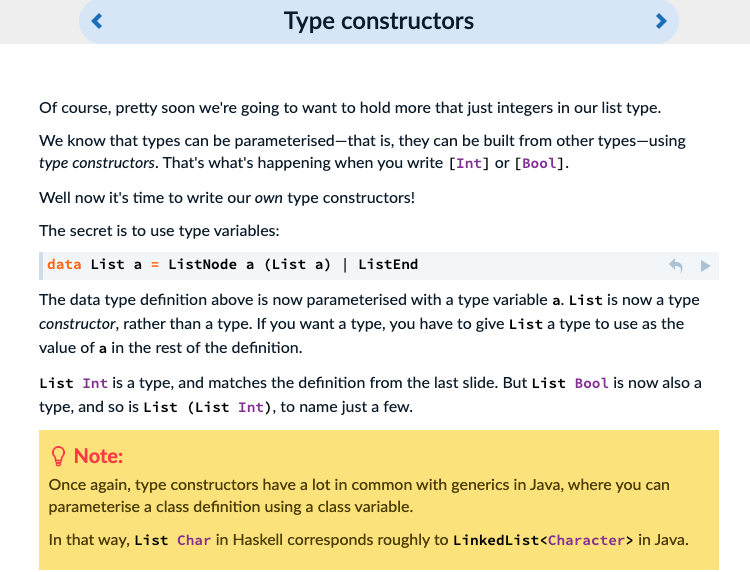对Discrete Mathematics Using a Computer的第一章Introduction to Haskell进行总结。环境Windows。
2020.3.13 更新:COMP90048 Declarative Programming 又继续学习了Haskell。
类型别名 type synonym
作用和C中的typedef差不多,形式如:
type Message = (String, Int)
首字母大写。
自定义数据类型 data type definitions
形式如:
data Colour = Red | Orange | Yellow | Green | Blue | Violet
Colour type包含了Red Orange Yellow Green Blue Violet这些值,这些值是constructor,其开头字母要大写。
还有包含类型变量type variables的形式data constructors:
data Point = Pt Float Float --这里Pt就是data constructor,更通常的是把type和data constructor写成一样的,即data Point = Point Float Float
为type指定默认类型在末尾deriving
data MyBool = MyTrue | MyFalse
deriving (Eq, Show)
如果要为type指定自定义类型,则要单独定义,如:
自定义类型类 type class
从 + 操作说起,+可以作用于许多类型如整形和浮点型等,其得出的结果类型也不是单一的,这就有个问题:+的类型是什么?如果是(+) :: Integer -> Integer -> Integer的话,则当浮点数相加时是不符合的,而如果是(+) :: a -> a -> a就意味着任何类型都适用,如True + False,这也不对,我们想要的是当类型是数字numeric时适用,实际上(+)的定义为:
(+) :: Num a => a -> a -> a
Num是类型类type class,Num包括Int, Integer, Float, Double等类型。Num a =>称为类限制(class constraint or context),表示只有当参数的类型是属于Num时(+)才适用。除了Num还有其他的type class:
Ord用于比较
Haskell允许自定义类型类,常用的类型类有Num, Show, Eq。Num表示该类是数字numeric,Show表示可转换成字符串,Eq表示可用于比较是否相等。
Type Constructors
data List a = ListNode a (List a) | ListEnd

Maybe
